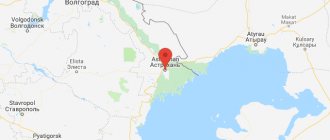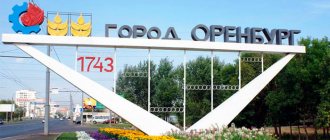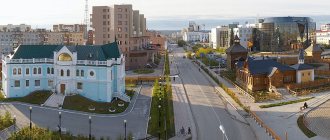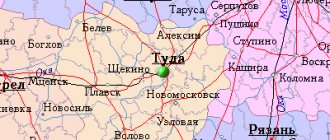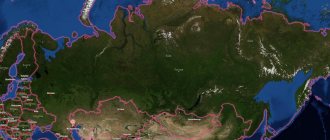Founded: 1558
The date of the city day is unique for each year.
In 2021,
this date is
September 12
.
In 2021, due to the pandemic, mass events in honor of the city day are canceled or may be postponed
White City - the historical part of Astrakhan
Astrakhan
- a Russian city, the center of the Astrakhan region, located on 11 islands of the Caspian lowland, in the upper part of the Volga delta.
The settlement that was on the site of Astrakhan had different names at different times: Astarkhan, Ashtarkhan, Khadzhi-Tarkhan
. There is an opinion that near the modern territory of Astrakhan there was also the famous Itil, the capital of Khazaria.
Its convenient position for trade at the crossroads of routes from Persia and India to the Russian principalities and Europe made the city a tasty prey for neighboring states. The settlement was destroyed several times, but always not completely; the winner always needed a trading platform. The first written mention of the city dates back to 1333.
An Arab traveler writes about the city as the autumn residence of the Khan of the Golden Horde. In 1395 the city was destroyed by Tamerlane. And in 1456, Astrakhan became the capital of the Astrakhan Khanate. In 1556, Ivan the Terrible annexed the Astrakhan Khanate to Russia, and in 1558 the city was moved to a new location. Construction of the Russian fortress in 1558
in the new place is considered to be
the date of the founding
of modern Astrakhan.
At the beginning of the 17th century, Astrakhan was plundered by both Don and Terek Cossacks. In 1670, residents of Astrakhan supported Stepan Razin. Astrakhan received city status under Peter I.
At the end of the 19th century, due to the development of oil fields in Baku, the Astrakhan port became one of the largest in the country. Astrakhan is famous for its fisheries and the best beluga, stellate sturgeon and sturgeon caviar.
During the Great Patriotic War, the front was 150 km from the city. During the war, Astrakhan was an important transshipment point for fuel and lubricants from the Caucasus towards central Russia; many hospitals were concentrated in the city.
In the post-war years, industry developed in the city. Nowadays, with the development of international trade on the Caspian Sea, the importance of Astrakhan as a transport hub is growing.
Assumption Cathedral and the bell tower of the Prechistensky Gate
Astrakhan is famous
for its many bridges spanning rivers and eriks. The Astrakhan Kremlin is magnificent. In the center of the former White City, the farmsteads of oriental merchants, mosques, and the Roman Catholic Church of the Assumption of the Virgin Mary have been preserved. Interesting art gallery named after. B.M. Kustodiev and the historical and architectural museum-reserve, famous for its collection of historical monuments of the Khazars and the Golden Horde.
In the vicinity of the city, tourists are attracted by the salt lake Baskunchak and the highest relief element in the Caspian lowland - Mount Bolshoye Bogdo; 20 caves are known in the mountain area, the largest of which reaches 1.5 km.
Interesting Facts
The Astrakhan Catholic Church was the third most founded Catholic church in Russia (after St. Petersburg and Moscow). The Astrakhan Kremlin is depicted on a commemorative ruble coin.
More than 530 thousand people live in the city (2014).
Day of the city
in Astrakhan it is celebrated in the fall.
About the formation of the Astrakhan region
On the site of the Astrakhan region in the 7th-10th centuries.
there was an ancient Turkic Khazar Khaganate with the dominant religion of Judaism and its capital in the city of Itil. At the end of the 10th and beginning of the 13th centuries. Here the leaders of the fragile nomadic hordes and tribal associations of the Turks - the Pechenegs and the Polovtsy-Kypchaks - ruled. In the middle of the 13th century. the lower reaches of the Volga became the center of the vast Mongol-Tatar state “Golden Horde” (“Ulus of Jochi Khan”). The cities of Saray-Batu, Saray-Berke arose here, and from the very beginning of the 14th century. The city of Hadji-Tarkhan, the predecessor of modern Astrakhan, is also known. Close contacts were established with many countries, including the Nile Delta - Mamluk Egypt.
Two campaigns of the troops of the Russian Tsar Ivan IV the Terrible in 1554 and 1556. led to the conquest of the Khanate and its entry into the Russian state. The designation “Tsar of Astrakhan” was included in the official title of the Russian autocrat.
Moved to a new location in 1558 around the fortress, the city of Astrakhan became a reliable military-political outpost in the south of Russia, a transshipment base for its advance to the Caucasus and the Asian Caspian Sea, and a center of active trade and interstate relations. This is how the Astrakhan voivodeship was formed.
Taking into account the special and growing role of Astrakhan as the most important city of Russia in trade and political relations, on November 22, 1717, Peter I signed a decree on the founding of the Astrakhan province and the annexation of a number of cities to it: Simbirsk, Samara, Syzransk, Kashkar, Saratov, Petrovsky, Dmitrovsky, Tsaritsyn , Cherny Yar, Krasny Yar, Guryev and Terek.
The Astrakhan province was determined to play an important role in Russia's relations with the East. In the Caspian Sea and the Volga, Peter I saw the main highway connecting all trade of Russia and Europe with India, Iran and Central Asia. The government was interested in directing the flow of eastern goods along the Caspian-Volga route.
Among the inhabitants of the region - Russian subjects, already at that time we find Russians, Nogais, Kalmyks, Tatars, Caucasian highlanders - "Circassians", traders from Asian countries all the way to distant India.
The administrative term “Astrakhan region” first appeared in 1785, when it (May 5, old style) was allocated along with the Caucasus region as part of the Caucasian governorship. However, the Astrakhan province existed for a longer period - from 1717 to 1785. and then from 1802 to 1928.
At the same time, right up to the revolutionary events of 1918-1920, it also included the Kalmyk steppe and the Kyrgyz-Kaisak (i.e. Kazakh) internal Bukey Horde, which later led to certain difficulties in territorial demarcation and drawing new borders, never passed full state codification. Then the Astrakhan district (otherwise “interdistrict”) was included successively in the 30-40s. to Nizhne-Volzhsky, then to the Stalingrad region.
Khanate of Astrakhan
Unlike other settlements, Astrakhan quickly recovered after the defeat, this is explained by the fact that the city’s residents were engaged in nomadic cattle breeding and sedentary farming and therefore could feed themselves.
In 1459–1460, the Astrakhan Khanate was formed, which was headed by Mahmud Khan, brother of the Khan of the Great Horde Akhmad, and later by his son Kasim.
At this time, the city lost its significance as an important trading point between Europe and Asia. Often the occupation of the residents, led by their khan, was the robbery of passing ships. This is evidenced by the stories of the Russian traveler Afanasy Nikitin and the Venetian ambassador Ambrose Contarini, who passed through Astrakhan when returning from Persia.
A. Contarini recalled that he miraculously escaped slavery; he also wrote that the Astrakhan khans wander with all their people on the plains of Circassia and near Azov, reaching the borders of Russia, and live in the city only in winter.
Every year, a caravan with fabrics and other goods was sent from the Khanate to Russia, which were exchanged there for furs and saddles, swords and other things.
The Astrakhan Khanate existed for about 100 years and during this time it never achieved power. Astrakhan also remained a poor city, consisting mainly of dugouts.
The khan's power here was weaker than in other Horde states; it was constantly dependent on the Great Horde, and after its collapse, on the Crimean Khanate.
In turn, the Moscow governors also sought to take the Astrakhan Khanate under their control.
About the origin of the name “Astrakhan”
The most accurate original version of the name of the city is the toponym “Hadji-Tarkhan”, mentioned for the first time in 1333 by the Arab traveler Muhammad Ibn-Battuta.
In this case, “haji” (Arabic) means the title of the ruler (viceroy), who was also a clergyman in Islam, and “tarkhan” (Mongolian) is a safe-conduct from the khan on immunity, the basis of “city liberties.”
Founded at the beginning of the 14th century. on the right bank of the Volga, this old Tatar Astrakhan (the settlement is almost completely washed away by the river) with the peaceful annexation of the Lower Volga to Russia was moved in 1557-1558. Russian administration to the left bank and 12 km to the south, where the city center is now located.
Other interpretations (“Tarkhan of the As tribe”, “city of the Khan’s daughter Astra”, “place of the fairy-tale dragon king Adzhidaar”) are less reliable, although they are found in ongoing discussions.
Assumption Cathedral
The main decoration of the Astrakhan Kremlin is the Assumption Cathedral, the pearl of Astrakhan. Originally in 1560 it was a wooden church, and at the end of the 16th century the church was rebuilt in stone.
The new Assumption Cathedral was erected in 1698–1710 according to the design of the Russian architect Dorofey Myakishev. Its height is 75 meters and its area is 1790 square meters. meters.
Initially, the temple was multi-colored: its walls were red, the platbands, windows and capitals were white, and the details of the bypass gallery were multi-colored. Now, from the most remote points of Astrakhan, we admire the snow-white temple.
Peter the Great, while in the city, noted the beauty of the Assumption Cathedral: “... There is no such stucco temple in the whole state...”.
In the lower church there is a tomb of Astrakhan metropolitans and bishops.
Coat of arms
The coat of arms of Astrakhan is made in the form of a blue French shield. It features a crown with a green lining. Its five prongs are topped with a cross. The arms are inlaid with pearls. The middle one is decorated with gems. Under the headdress is a silver oriental sword with a gold hilt facing the viewer's right.
The composition was entered into the State Heraldic Register of the Russian Federation under No. 280. Approved on June 24, 1993, with amendments and additions dated April 21, 1998. It goes back to the coat of arms adopted in 1856.
Walk around the city of Astrakhan
A walk through the old city, as a rule, begins at the Kremlin. The ensemble of the Astrakhan Kremlin consists of churches and bell towers. Despite the fact that they are all built in different years, together they look very harmonious. The most valuable exhibit is the Assumption Cathedral, which is also the oldest building in the complex - it is 450 years old. At the level of the upper temple there is an observation deck, from where you can admire the panorama of the Kremlin ensemble.
The oldest street in Astrakhan is adjacent to the Kremlin. Through the Prechistensky Gate you will just exit onto Sovetskaya Street. This area is called the “White City”, since until the 19th century it was a suburb and was surrounded by a fortress wall. In addition to the name, the area has left its original appearance intact: every building here is a cultural and historical object: the oldest drama theater building in the country, up to the governor, Armenian, Indian and Persian trading farms and many other interesting buildings.
A leisurely walk along this route will take you two to three hours and will open up Astrakhan for you.
Geographical location of Astrakhan
Astrakhan is located in the semi-desert zone of the Caspian lowland. The territory of the city stretches for more than 45 kilometers along the banks of the Volga. Astrakhan is often compared to Venice or St. Petersburg, since the city is located on 11 islands. The terrain is flat and consists mainly of steppes.
The climate in Astrakhan is sharply continental: severe winters, during which frosts are replaced by short thaws, and sultry, dry summers. Astrakhan has more than two hundred sunny days a year.
Sights of Astrakhan
- Astrakhan Kremlin
The pearl of the “fishing capital” adorning the banks of the Volga is the Astrakhan Kremlin. This is a whole complex, including 22 buildings. The Kremlin is perhaps the oldest building in the city. The appearance of the Kremlin has not actually changed. Restoration work here began in the late fifties of the last century and continues to this day. The total area of the fortress exceeds 1.5 thousand square meters, and the height of the fortress walls varies from 7 to 11.5 meters. An interesting fact is that during the construction of the Astrakhan Kremlin, building materials left over from the ruins of the capital of the Golden Horde were often used.
- Cathedral of the Moscow Bishop's Metochion of St. Prince Vladimir
They decided to build this temple on the occasion of the 900th anniversary of the baptism of Rus'. The illumination of the site for its construction took place precisely on the day when, by decision of the Holy Synod, a solemn event is celebrated. The newly built temple became the largest building in Astrakhan.
During the Soviet years, the temple faced a difficult fate, but it continued to perform its direct functions until 1939, when it was finally closed. However, it managed to avoid the fate of being destroyed. And even during the second attempt to demolish the temple in the 60s, the townspeople defended it. According to legend, the woman tied herself to a cross on the dome of the temple, and the Astrakhan Tatars surrounded the building with a living ring and burned fires, not allowing anyone to approach the building. And until 1999, the temple served as the Astrakhan bus station.
- Museum of Local Lore
The provincial “museum” was opened in Astrakhan back in the 30s of the 19th century. Over the course of many years, the exposition of the current local history museum has been collected. It began, like many others, with private collections. It should be noted that it was the Astrakhan museum that became the first provincial museum. Today here you can get acquainted with archaeological exhibits from the times of the Golden Horde, a collection of photographs and documents, rare books, weapons and much more. In total, the Astrakhan Local History Museum has more than 300 thousand exhibits.
Popular message topics
- Works of Tolstoy Alexey Konstantin
Alexey Tolstoy is a famous person, a classic. Count, poet, writer and playwright, satirist. A very ambitious person. Second cousin of Lev Nikolaevich Tolstoy. He made a huge contribution to literature. - Laptev Sea
The Laptev Sea is located in the northern part of Russia in the Siberian region and is adjacent to the Arctic Ocean. There are many islands in the waters of the sea, while the Laptev Sea is the only sea in Russia - Continent of Australia
Australia is the smallest continent on our planet, washed by the Indian and Pacific oceans. Its territory occupies only a small amount of land. This is the only state that occupies an entire continent, and is called completely
Astrakhan today
Today, the once small city, which gained fame as a “fishing” capital, is rightfully considered an important strategic transport hub, river and sea port, industrial and cultural center of the Lower Volga region.
However, this was not always the case. In post-Soviet times, Astrakhan lost some of its former greatness: fishing decreased, production stopped, and agriculture fell into decay.
Anyone who can compare today's Astrakhan with the city of those years has only one association - the city is coming to life. Many political and cultural figures have repeatedly noted the qualitative rise of Astrakhan and predicted its fate as a direct competitor in its beauty and amenities to such cities as Moscow, Kazan and St. Petersburg.
